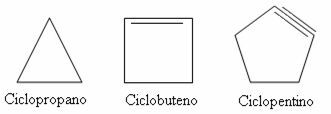Some of the most interesting curiosities relating to the various European dynasties, or aristocratic “houses”, are associated with the luxurious way of life they maintained and the close link of luxury and wealth with the art. A clear example is the HouseRomanov, the noble dynasty that enthroned tsars in the Russian Empire from 1613 to 1917 – the year in which it was cast out of power with the Russian revolution. From the 19th century, the Romanovs hired the services of the artisan and jeweler PeterCarlFaberge to elaborate and produce eggsinEaster special for family members.
The ornament of eggs and the celebration of Easter
It is known that, from the first moments when Christianity began to penetrate pagan communities in antiquity, its liturgy rituals absorbed and transformed pagan religious practices. One of these practices was painting and ornamenting the eggs of various birds as a way of announcing spring. This practice then became associated with the date of Easter, which is considered the most important date in Christianity for referring to the death and resurrection of Jesus Christ.
Also access:Christian Easter
Since then, the delivery of Easter eggs has been adjusted to the liturgical calendar of the Christian Church, both Catholic and Orthodox. Since the Romanov family, since its origins, is closely linked to Orthodox Christianity, the ceremony the delivery of ornate Easter eggs as gifts was considered one of the most anticipated of the year.
How did Fabergé eggs become a tradition among the Romanov dynasty?
Based on this context, in 1885, Russian Tsar Alexander III had the idea of giving a gift to his wife, Marie Fedorovna, with a luxurious Easter egg, that is, an egg that had stones and metals as ornaments precious. The order was then placed with the jeweler, already famous in Russia at the time, Peter C. Faberge. Fabergé was a member of a Huguenot (French Calvinist) family of artisans from the Picardy region of France. His father, Gustav, settled in Russia, specifically in the city of St. Petersburg, in the 1830s.
Carl Fabergé, born in 1846, soon joined his father's business, which enabled him to train in the best art and jewelry centers in Europe. From the 1880s, Fabergé built a great empire in the jewelry business, known to this day as maisonFaberge (that is, HouseFaberge). The impact of the work of the maisonFaberge came to the appreciation of Russian aristocrats. The commission by Tsar Alexandre III, mentioned in the previous paragraph, was the beginning of a new phase in Fabergé's career, which consecrated him not only as a jeweler and goldsmith, but as a great artist.
To the Russian empress, Fabergé designed and produced an Easter egg that was, at the same time, a real work. of art and a real rare gem, or rather: a set of gems, valued at millions of dollars today in morning. For example, one of the Tsar's demands was that the egg should have a "surprise" inside. The surprise that Fabergé left was a small statue of a chicken laying a sapphire stone.
Also read about:The Story of Easter Eggs
From then onwards, Fabergé started receiving orders for eggs, initially, for the other members of the family. Romanov, but soon had to meet a demand that came from other aristocratic houses, not just the Russia. The structure of the eggs followed the same as that made for the empress: the exterior was entirely forged in some kind of metal, such as gold, coated of precious stones and sometimes with paintings or photographs of family members to be presented studded in the face as well. external. Inside, there was always some kind of gift, also made with luxurious ornaments.
Romanov eggs have, over time, become an object of greed by many types of people, from mobsters to art collectors. There were even movies that represented the attempt to steal some of these eggs, such as Mimi Leder's, Thick as Thieves (game between thieves, in Brazil), starring Morgan Freeman and Antonio Banderas.
*Image credits: walter_g | Shutterstock
By Me. Cláudio Fernandes
Source: Brazil School - https://brasilescola.uol.com.br/historiag/ovos-pascoa-familia-romanov.htm


